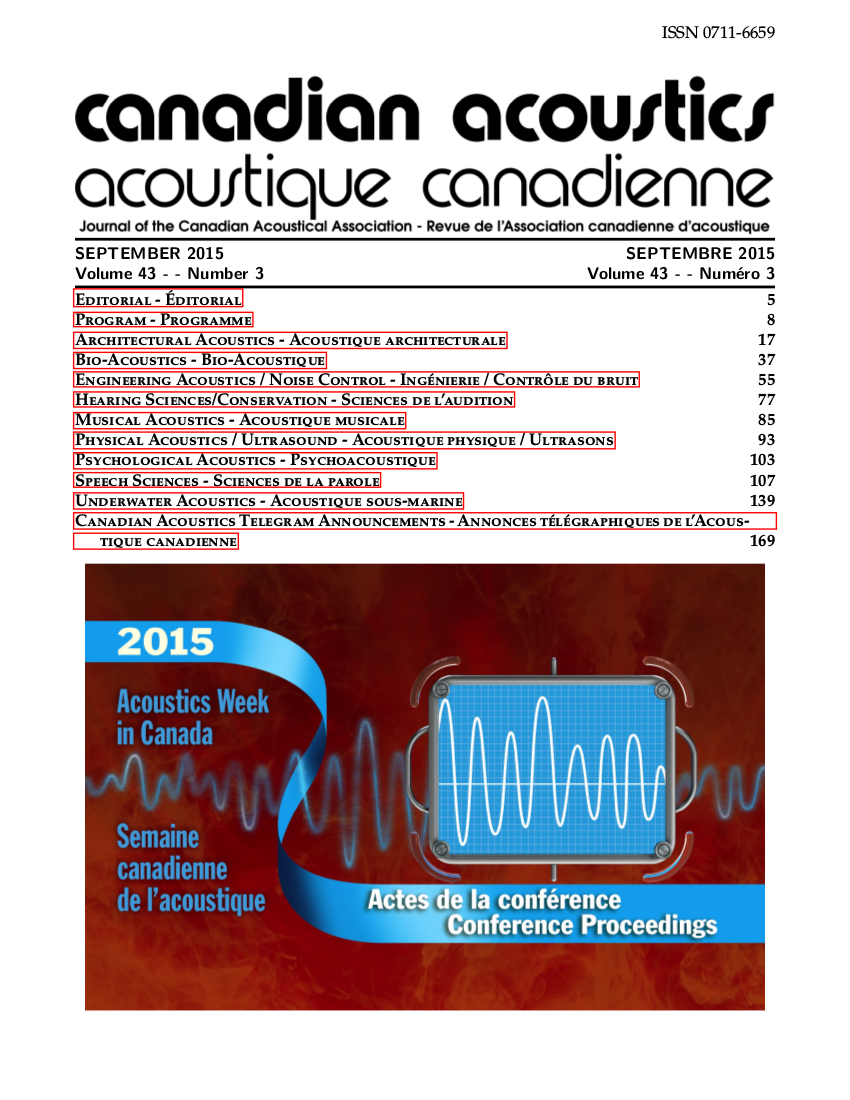Simulation of Fresnel based beam focusing and steering for a crossed electrode array
Abstract
Fresnel based beamforming has been investigated for use with a high frequency crossed electrode array. A Fresnel zone plate uses a pattern of in phase and phase reversed pulses across the aperture chosen based on the distance from the element to the focus. The pattern of positive and negative pulses can be achieved using an array material whose response depends on a DC bias (e.g. electrostrictive ceramics, CMUTs) and applying either a positive or negative voltage.
Fresnel based focusing introduces a challenge in pulsed ultrasound applications. The delays are quantized to 0 or ?/2, therefore, the pulses do not properly overlap when the difference in element-focus distance exceeds a wavelength. Because of this, the bandwidth is reduced below an acceptable standard for pulsed imaging. We have developed a novel design that pulses separate sub-apertures of the array while compensating for the delay error in each section. In exchange, the number of transmit events increases.
A Fresnel approach is advantageous for a crossed electrode array using the following scheme. The Fresnel aperture focuses in azimuth on transmit while the elevational elements are beamformed traditionally. Between transmit and receive events the signals switch sides. The biases are applied in elevation and dynamic receive beamforming can be completed in azimuth and a two-way focus is achieved.
A 40MHz crossed electrode array with 64 elevational and 64 azimuthal elements was simulated using Field II software. The results were compared with a 64x64 element traditionally beamformed 2D array. The two-way radiation patterns from the crossed electrode array using the Fresnel approach show -6dB beamwidths comparable to the 4096 element array but requires only 128 array connections. The resolution was 102, 126 and 151 µm when steered to 0, 15 and 25 degrees respectively. The side lobe levels raised by 15dB using the Fresnel approach.
Additional Files
Published
How to Cite
Issue
Section
License
Author Licensing Addendum
This Licensing Addendum ("Addendum") is entered into between the undersigned Author(s) and Canadian Acoustics journal published by the Canadian Acoustical Association (hereinafter referred to as the "Publisher"). The Author(s) and the Publisher agree as follows:
-
Retained Rights: The Author(s) retain(s) the following rights:
- The right to reproduce, distribute, and publicly display the Work on the Author's personal website or the website of the Author's institution.
- The right to use the Work in the Author's teaching activities and presentations.
- The right to include the Work in a compilation for the Author's personal use, not for sale.
-
Grant of License: The Author(s) grant(s) to the Publisher a worldwide exclusive license to publish, reproduce, distribute, and display the Work in Canadian Acoustics and any other formats and media deemed appropriate by the Publisher.
-
Attribution: The Publisher agrees to include proper attribution to the Author(s) in all publications and reproductions of the Work.
-
No Conflict: This Addendum is intended to be in harmony with, and not in conflict with, the terms and conditions of the original agreement entered into between the Author(s) and the Publisher.
-
Copyright Clause: Copyright on articles is held by the Author(s). The corresponding Author has the right to grant on behalf of all Authors and does grant on behalf of all Authors, a worldwide exclusive license to the Publisher and its licensees in perpetuity, in all forms, formats, and media (whether known now or created in the future), including but not limited to the rights to publish, reproduce, distribute, display, store, translate, create adaptations, reprints, include within collections, and create summaries, extracts, and/or abstracts of the Contribution.


